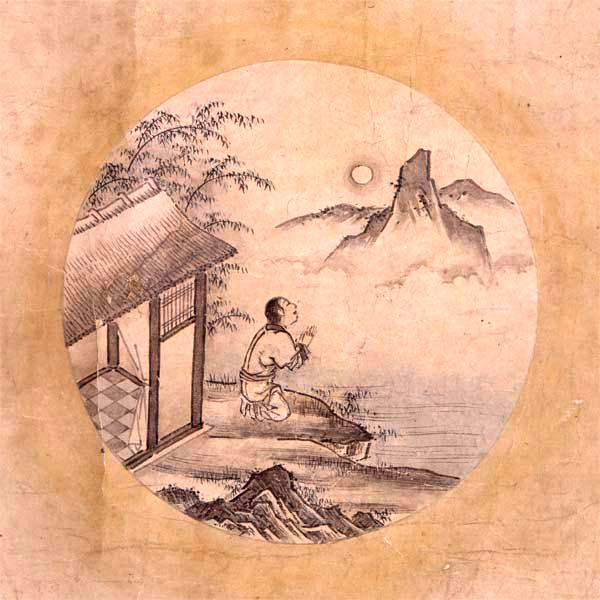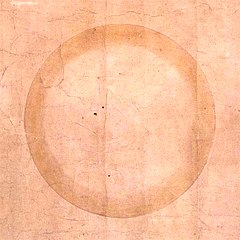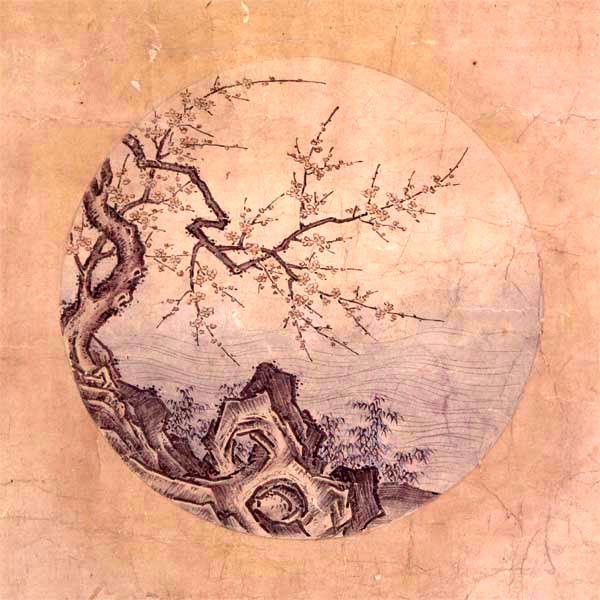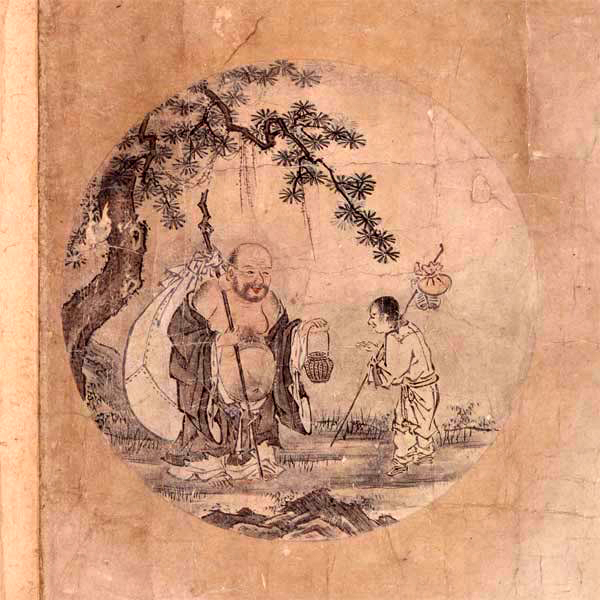“Students, even if you gain enlightenment, do not stop practicing, thinking that you have attained the ultimate. The Buddha Way is endless. Once enlightened you must practice even more” (Dogen).
A Zen Classic
Whereas Nishida Kitaro, the founder of the Kyoto School, had focused on a reformulation of East Asia’s apprehension of reality as self-contradictory, using a Western philosophical terminology, and Nishitani on a phenomenological analysis of the religious quest, primarily but not exclusively, “according to the Buddhist way of thinking,” Ueda had “a penchant for making the seemingly abstract philosophy of [his] dynamic non-mysticism concrete” in a language accessible to ordinary practitioners (Bret W. Davis). Ueda began to lecture on the Ten Oxherding Pictures during his second stay in Germany in 1970-71, and later devoted two books to this Zen classic.

As Davis reminds us, the original pictures and texts associated with the Ten Oxherding Pictures were composed in the twelfth century by the Chinese teacher Kuoan Shiyuan and his successor Ziyuan, of the Linji school, which corresponds to the Rinzai school in Japan. These original pictures, however, have been lost, so the ones that have come down to us have been recreated over the centuries by several artists. Ueda’s favourite rendition of the pictures was that which the Japanese artist Tensho Shubun recreated in the fifteenth century. Shubun was a monk at Shokokuji monastery where both Ueda and Davis practiced.

The Shubun’s version of The Ten Oxherding Pictures purports to describe the path followed by a Zen practitioner from his/her very first steps to his/her full realisation. The two protagonists of the narrative are a young man and an Ox which stands for his true self. In the first six pictures the man searches for the Ox, finds its traces, sees it, catches and tames it, leads it, and then rides it home. Davis then writes that “the seventh picture can be understood as representing both the peaceful power and the potential danger of the mystical union. Here the man, having merged with and finally “forgotten” the Ox (i.e., having overcome the duality between the self that is seeking and the self that is sought), sits at peace with himself, or, as some versions have it, sings his praises to the moon (a traditional symbol of enlightenment). He has apparently realized his enlightened Buddha-Self. But the eighth picture, the empty circle, which Ueda understands dynamically as the radically emptying experience of the place of absolute nothingness, breaks through every possible attachment to the most exalted experience of a unio mystica.”
Other versions of the pictures, such as that of Puming and Quingjiu, end with the empty circle in Picture 8. “It is a fact,” Davis says, that “some spiritual paths … end with a sage at peace with himself on a mountaintop. Such solitary sages leave the world behind or, at least, leave it as it is. For Zen, this is to have climbed to the top of a hundred-foot pole and yet to be unable or unwilling to leap off – to leap, that is, back into the world filled with dust as well as flowers.” So, Kuoan and the Japanese Zen tradition “insisted on adding two more pictures – two more steps, as it were, in the round dance of the true self that takes place in a ceaseless movement among pictures 8, 9, and 10.”
“The final three pictures pose formidable hermeneutical challenges.”

In a chapter he contributed to the Oxford Handbook of Japanese Philosophy, Steffen Döll explains that, though the first six or seven pictures are intuitively understandable, “the final three pictures pose formidable hermeneutical challenges.” And it is on the three last pictures that Ueda focused his attention. Döll writes: “Ueda’s exegesis is based on the assumption that pictures eight, nine, and ten are no longer stages in a developmental process, but rather interrelated aspects of what Ueda calls the “dynamic trinity” of the true self … The de(construction) of our everyday self becomes the primary concern to our true self.”
At first glance, it was obvious that the ox in the pictures stood for the true self. We could, however, ask, “why an ox?” Davis answers that taming an unruly ox had been used as a simile for the practice of meditation in early Buddhist sutras and in earlier Zen texts. Davis adds: “Ueda points out that the calmness and confidently plodding nature of the ox makes it a good metaphor for the meditative mind. Moreover, an ox’s great strength can become dangerous if one upsets and loses control of it, just as the untamed mind is unwieldy and destructive.” And, “although in the first six pictures the ox represents the true self, it nevertheless represents the true self from the standpoint of the deluded, self-alienated self. The struggle between the oxherder and the ox is a struggle with and within ourselves … It is only in picture 7 that the oxherder is able to dispense with the image of the ox altogether and just be himself.”

So, in picture 7, the seeker found his higher, truer self. But, in picture 8, even that needed to be let go of. No more inner, no more outer, now he can finally just let things be as they are. Picture 9, which simply depicts a mountain stream flowing under a tree in bloom – without self in sight – shows how it is easiest to do this in nature. It is relatively easy to let beautiful flowers and meandering brooks show themselves in all their natural splendor without getting in their way. As the open heart-mind of the empty circle, the true self formally withdraws from the scene, getting completely out of the way so as to make room for the forms of nature to present themselves.”
Pictures 8, 9 and 10 parallel four great Zen sayings
One of these parallel sayings is: “First the Great Death; after cutting off completely, then coming back to life.” The great negation depicted in Picture 8, entitled “Person and Ox Both Forgotten,” is followed in Picture 9 by an idyllic representation of a flowering tree, and in Picture 10 an old sage coming down the mountain and returning to the market place where he greets a young man. The overcoming of duality of the self that seeks and the self that is sought triggers an affirmation of all things as they are, which cannot be represented, but are pointed to by the charming depiction of the flowering tree and the river. Supported by this affirmative stance, the newly enlightened practitioner is not to remain in the sweet isolation of a splendid nature but is called to become a bodhisattva in the midst of the teeming cities of this world.

Hence, Davis says, “picture 10 … is a Zen depiction of the Bodhisattva return to the world to work on behalf of liberating and enlightening others … Going to bars and fish markets, he turns all into Buddhas’, Ziyuan tells us. ‘He does not use any secret sagely powers to do this,’ Kuoan says, but merely by entering the marketplace bare-chested and barefooted, covered in dirt and ash – and smiling from ear to ear. His contagious laughter creates an atmosphere of infectious peace and joy that surrounds him wherever he goes.”
This sage is “traditionally associated with Budai, a tenth-century Chinese monk, who was nicknamed the ‘Laughing Buddha’. Known in the West also as the ‘Happy Buddha’, in the East he came to be thought of as a prefiguration of Maitreya, the Buddha of the future … Budai does not make a show of his Bodhisattva blessings. We are told that he ‘hides’ his light, concealing his sageness under the dirt and ashes of his service“ (Davis). This is the image the Buddha one comes across in East Asian popular imagination, quite unlike the Hellenistic aristocratic depiction of the Buddha found in ancient Gandhara and India during the Gupta period.
Davis also tells us that another parallel can be found between the last three pictures and Dogen’s verses about the true self. Picture 8 can be paired with “To study the self is to forget the self.” This is what Dogen calls the “dropping off of the body-mind,” the cutting off of all attachments. Picture 9 can be paired with “To forget the self is to be enlightened by the myriad things of the world.” “With the false fabrications of our isolated egos out of the way, the interconnected events of the world can naturally shine forth without egoistic distortion.” Picture 10 can be paired with the last line of Dogen’s verses: “To be enlightened by the myriad things of the world is to let drop off the body-mind of the self and the body-mind of others.” “No longer thinking of oneself as selfishly separated from others, one inspires others to set out on the path of the same realization.”
A third parallel is found in the Heart Sutra: “form is emptiness, emptiness is form.” Picture 8 shows that form is emptiness, whereas picture 9, which depicts a mountain stream flowing under a tree in bloom represents “emptiness is form.”
Last, Davis writes, “In Zen parlance, whereas picture 8 displays ‘true emptiness’ (Jp shinku), picture 9 displays ‘wondrous being’ (Jp myou). These two go together since it is precisely because things are empty of independent substantiality that they can be as they truly are in their dynamic interconnectedness. As for picture 10, the modern Rinzai Zen master Akizuki Ryomin follows D T Suzuki in saying that it expresses the ‘wondrous activity (myoyu) that issues from a realization of the nonduality of true emptiness and wondrous being’.”
Symbolic meaning of the Circle
Davis remarks that one of the way to understand the circle is to see it as a “symbol of infinity.” So, “when I see the empty circle, I see freedom and creative potentiality, the absence of any boundaries and the open source of all innovation. I also see a formless symbol of the open mind of wisdom and the open heart of compassion.” So this is where the mere merging of the self with the One formless reality is transcended, or rather trans-descended, as Nishitani would have said, as the opening up of one’s self to the Many (phenomena) now understood as a presencing of emptiness in our everyday lives. What has been described by the Tiantai school as “entering emptiness from the side of phenomena.”
Davis adds that “in East Asia … the empty circle – or, as it is usually called, ‘the single circle’ – is seen as a sign of perfection, a well-rounded completeness without any jagged edges remaining. In fact, one of the first Western philosophers, Parmenides, spoke of the one true reality as a homogeneous ‘well-rounded sphere’. Yet, in stark contrast to his conception of an unchanging and undifferentiated One, the empty circle of Zen dynamically makes room for the teeming multiplicity of forms.” He also remarks that the empty circle is left open, “reminding us that it symbolizes a dynamic Way that never reaches a static completion. The empty circle can thus be understood and experienced as the creative source as well as the peacefully encompassing abode – the Source-Field – of all the multifarious things we experience.”
In agreement with Döll, Davis writes that “Ueda reads the last three pictures as a circulating set: the empty circle of the eighth picture as the absolutely denuding experience of emptiness; the river and tree of the ninth picture as the egoless suchness of natural phenomena; and the sage returning to the marketplace and greeting a young man in the tenth picture as the compassionately engaged interpersonal encounter. While the first seven pictures recount the necessary path toward ecstatic mysticism or self-realization, it is the “forgetting the self” (Dogen) in the leap into a circling between the last three pictures that, for Ueda, portrays the ultimate dynamic of Zen’s non-mysticism.”
Ueda also points out that “in Kuoan’s version of the oxherding pictures, the empty circle was in fact there from the beginning and remains there till the end. All the events before and after picture 8 take place within it, even though, before the inherently indescribable experience indicated by picture 8, we did not realize this.” “In fact,” writes Ueda, “from the beginning the true self was portrayed not as the ox but rather, insofar as it was portrayed at all, as the circle. And every determinate thing that appears within this all-embracing empty expanse is, as it were, a ‘self-determination of the true world of this single circle’.”
The circle which is so ubiquitous in the Ten Oxherding Pictures may be seen as a predecessor to Nishida’s “Place of Absolute Nothingness” and Nishitani’s “Field of emptiness,” as well as Ueda’s concept of the “Empty Expanse” or “Empty Space” (Jp koku) “that allows all form-things to exist in their interrelations and that encompasses all our finitely meaningful worlds.” In Ueda’s German writings, “koku” is translated as “die unendliche Offenheit” (the Infinite Openness) and “die unendliche Weite” (the Infinite Expanse).
A self that is not a self
Döll sums up Ueda’s commentary on the Ten Ox-herding Pictures as follows: “Together, the final three pictures thus form an intelligible set: negation and affirmation relate to one [an]other dynamically and constitute the bodhisattva’s play (i.e., a practice beyond practice, a pure, ludic, compassionate activity that goes beyond all dualistic divisions, such as that of means vs ends or subject vs object). The bodhisattva’s self is not actually itself any more but, as Ueda formulates it, a “self that is not a self” (jiko narazaru jiko). Whereas the eighth picture illustrates the radical negation of the self as a culmination of spiritual praxis, the ninth depicts the concrete reality that is “not the self,” with the tenth returning once again – in the double sense of herdsman and bodhisattva – to a “self.”
Ueda has encapsulated the notion of a “self that is not a self” in the beautifully simple formula,“I, in not being I, am I“ which can be unpacked as follows: “The experience of anatman [no-self] should be understood rather as the second moment in the dialectical movement of the true self, that is to say, of the self who affirms itself only by way of negating itself. The self-identity of such a self can be expressed as “I, in not being I, am I.” In other words, the true self is neither a reified object nor a static subject; it is not a subjective substance but rather a dialectically nondual process, a movement of “I, negating myself, am myself.” Ueda understands the Buddhist teaching of anatman to be calling attention to the crucial moment of “in not being I” or “negating myself,” a moment in the process of the true self that breaks open the karmically driven closed circuit of “I am I” and enables the self to be itself by way of not being itself. The true self, for Ueda, is realized as the dynamic entirety of this circling movement between self-negation and self-affirmation” (Davis).
“In the end, … the path leads down from the mountains right back to the valley where we started. Passing the torch of the beginner’s mind to others, our journey does not end. Only now we realize that the journey itself is the true destination. Now, at last, we are at Home on the Way … Paradoxically, the end of practice is to realize that there is no end of practice. Real Zen is this endless realization” (Davis).
Sources:
Steffen Döll – “The Self That is not a Self in a Twofold World” in The Oxford Handbook of Japanese Philosophy, Ed. Bret W. Davis
Bret W Davis – Zen Pathways: An Introduction to the Philosophy and Practice of Zen Buddhism
Bret W. Davis – “The Contours of Ueda Shizuteru’s Philosophy of Zen” in Tetsugaku Companion to Ueda Shizuteru
